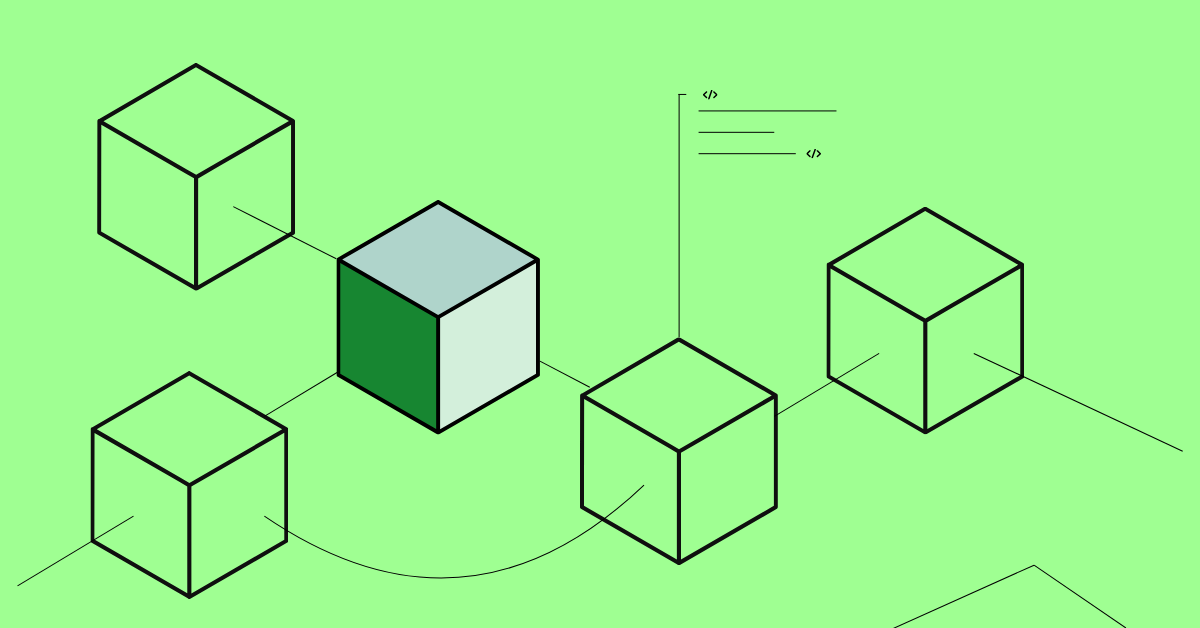[ad_1]
1. Introduction
Interplay with blockchain paves the way in which for builders aiming to leverage blockchain technology. It helps you construct decentralized apps, execute sensible contracts, and combine blockchain functionalities. This text offers you, with all of the stipulations and steps wanted to arrange an appropriate setting, carry out operations, and develop higher options and functions in blockchain. So are you prepared?
2. Setting Up the Atmosphere
Whereas configuring your setting, it’s important to decide on the proper instruments in accordance with your pursuits and necessities.
Node connection because the title refers is connecting the node within the community. This node is a gateway to the entry of blockchain knowledge and providers.
A lot of the blockchain nodes present Distant Process Name (RPC) and WebSocket endpoints. The place RPC is generally utilized in synchronous requests and Websocket is utilized in real-time knowledge and occasion description.
3. Establishing Connections
There are numerous libraries accessible for establishing connections most of them are primarily based on the 2 hottest programming languages Python and JavaScript.
JavaScript libraries are Web3.js and ethers.js principally used for interplay with Ethereum nodes. Web3.py is the equal of web3.js in Python which can also be used for Ethereum node interactions.
Additionally, another libraries are Go-Ethereum primarily based on Golang, and Nethereum primarily based on C#.
Additional, for different programming languages, you may examine the documentation of varied languages and their libraries for configuration.
Utilizing APIs and libraries to work together with exterior networks simplifies the interplay. Some in style APIs are Infura which offers scalable infrastructure, Alchemy used for Ethereum growth.Infura Infura affords sturdy infrastructure to hyperlink up with the Ethereum community. Infura makes it simple to connect with Ethereum offering reliable and expandable API providers. Another APIs are Quicknode, Moralis, and Cloudflare’s Ethereum gateway.
There are numerous APIs accessible however the setup course of has the identical generic steps as follows:
- Creating an account
- Producing the API key
- Use the generated key to configure your connection.
4. Querying the Blockchain
Querying in blockchain is just like querying every other database for time-series knowledge. You may request knowledge entry to retrieve it and browse it.
You may get totally different sorts of knowledge from the blockchain, like block particulars, transaction knowledge, and account balances. The libraries we talked about earlier than have capabilities to do learn operations. For instance, Web3.js has strategies comparable to web3.eth.getBlock() and web3.eth.getTransaction().
Blockchain networks create occasions for particular actions. Organising listeners allows you to reply to those occasions as they happen in actual time. Use WebSocket connections or polling to maintain up with the most recent occasions and knowledge and this can be a kind of dealing with the info.
5. Writing to the Blockchain
Placing knowledge on a blockchain requires you to create and signal transactions, and work with sensible contracts. This part will present you the right way to do these items utilizing well-known libraries.
Constructing and signing transactions:
Javascript(Web3.js)
| const Web3 = require(‘web3’);const web3 = new Web3(‘https://mainnet.infura.io/v3/YOUR_INFURA_PROJECT_ID’);
const account = web3.eth.accounts.privateKeyToAccount(‘YOUR_PRIVATE_KEY’); const tx = { web3.eth.sendTransaction(tx) |
Utilizing Web3.py(Python code)
| from web3 import Web3 web3 = Web3(Web3.HTTPProvider(‘https://mainnet.infura.io/v3/YOUR_INFURA_PROJECT_ID’)) account = web3.eth.account.privateKeyToAccount(‘YOUR_PRIVATE_KEY’) tx = { ‘from’: account.handle, ‘to’: ‘RECIPIENT_ADDRESS’, ‘worth’: web3.toWei(0.1, ‘ether’), ‘fuel’: 21000, ‘nonce’: web3.eth.getTransactionCount(account.handle), signed_tx = account.signTransaction(tx)tx_hash = web3.eth.sendRawTransaction(signed_tx.rawTransaction)receipt = web3.eth.waitForTransactionReceipt(tx_hash)print(receipt) |
Now after you have written the transaction it’s despatched to the blockchain community for validation and getting included within the block.
| JavaScript(Web3.js)
web3.eth.sendSignedTransaction(signedTx.rawTransaction) |
| Python(Web3.py)
tx_hash = web3.eth.sendRawTransaction(signed_tx.rawTransaction)receipt = web3.eth.waitForTransactionReceipt(tx_hash)print(receipt) |
- Good Contract Interplay:
Coping with sensible contracts which can be already up and working means you must use sure capabilities to learn and alter the contract’s saved data(state variables). This back-and-forth allows you to faucet into the whole lot the sensible contract can do making it potential to create advanced options in your dApps (decentralized functions).
Interacting with sensible contracts:
| Configuration: const Web3 = require(‘web3’);const web3 = new Web3(‘https://mainnet.infura.io/v3/YOUR_INFURA_PROJECT_ID’); Studying from the sensible contract: Calling a perform: Writing: const knowledge = contract.strategies.switch(‘0xRecipientAddress’, web3.utils.toWei(‘1’, ‘ether’)).encodeABI(); const tx = { web3.eth.sendTransaction(tx) |
6. Dealing with Responses
Dealing with responses from blockchain interactions the proper means is essential to creating reliable and easy-to-use apps. This implies getting a grip on transaction receipts and determining the right way to parse logs and occasions that sensible contracts generate.
Submit each transaction a receipt is generated which comprises data comparable to:
- Transaction hash: It’s a distinctive identification code
- Standing: Provides the standing of transactions as 0 or 1
- Block Quantity: The block during which the transaction was included
- Gasoline Used: The quantity of fuel utilized for the transaction
- Logs: The logs generated by transaction for parsing the occasion
Instance:
| tx_hash = web3.eth.sendRawTransaction(signed_tx.rawTransaction) receipt = web3.eth.waitForTransactionReceipt(tx_hash) if receipt[‘status’] == 1: print(‘Transaction profitable!’) else: print(‘Transaction failed!’)print(‘Transaction receipt:’, receipt) |
Transactions and sensible contracts create logs and occasions that give helpful particulars concerning the steps taken and outcomes.
Instance: Javascript code
| contract.occasions.MyEvent({ fromBlock: 0 }, (error, occasion) => { if (error) { console.error(‘Occasion error:’, error); } else { console.log(‘Occasion knowledge:’, occasion); } }); |
7. Safety Concerns
Safety is the principal of blockchain therefore maintaining it in consideration is crucial.
As we all know Non-public keys have restricted entry, so safeguarding them is extraordinarily essential.You need to use {hardware} wallets or different storage choices like AWS KMS, and HashiCorp Vault.
Additionally by no means hardcode the worth of personal keys in your code, all the time use setting variables or safe vaults.
Implementing correct entry management mechanisms for blockchain interactions is crucial. Implement role-based entry management and multi-signature wallets to make sure the management and significant interactions are safe.
8. Optimizing Efficiency
Optimizing the efficiency within the blockchain is important for bettering the responsiveness and price effectivity of the functions.
Strategies for environment friendly knowledge querying to scale back latency are
- Batch requests: This implies combining a number of requests into one single batch to enhance latency.
- Utilizing caching mechanisms: Arrange a cache to save lots of often-used data and minimize down on repeated queries to the blockchain.
- Gasoline Optimization:
- Optimize the fuel utilized by optimizing the code of your sensible contract.
- Use libraries comparable to OpenZeppelin for optimized functionalities.
- Scale back the price of the fuel utilized by minimizing the storage used and finishing up batch operations.
9. Testing Interactions
Testing the product is essential in each growth discipline and so is right here, to make sure reliability and performance.
Organising and utilizing native check networks to simulate blockchain interactions:
Ganache for Ethereum setup:
| npm set up -g ganache-cli ganache-cli const web3 = new Web3(‘http://localhost:8545’); |
- Mocking Blockchain Interactions:
Use Mocking libraries comparable to Eth-gas-Reporter to trace fuel utilization.
| npm set up eth-gas-reporter –save-dev
module.exports = { |
10. Steady Integration and Deployment (CI/CD)
Integrating the blockchain integration checks and automating the deployment enhances the method and improves reliability.
After we speak about automated testing CI/CD pipeline incorporation is inevitable, you need to use truffle and hardhat for a similar.
Writing workflows for automated testing and deployment ensures constant code and helps with fast iterations.
11. Monitoring and Upkeep
Organising monitoring instruments to trace blockchain interactions:
- Prometheus and Grafana: They go hand in hand the place Prometheus collects the metrics and Grafana visualizes them.
Following are the steps for the set up:
| Set up from the official web site. Configure:international: scrape_interval: 15s scrape_configs: – job_name: ‘ethereum’ |
Guarantee persistent and dependable connections to blockchain nodes.Implement a reconnection logic deal with the downtime of the node andd preserve the continual operations aswell.
12. Superior Matters
Layer 2 options are used for scalability.
Lightning Community: Bitcoin makes use of this off-chain repair for faster cheaper transfers. It units up cost paths between customers.
Plasma and Rollups: Ethereum scales with these instruments. They deal with trades off-chain and provides the primary chain a quick recap. This cuts down work for the primary blockchain.
- Cross-Chain Interactions:
Cross-chain interactions are used for interoperability.
Strategies of interacting with a number of blockchain networks:
Permits the alternate between two totally different blockchains with out involving a 3rd occasion. Makes use of the hased-time locked contracts (HTLC) to make sure each events fulfill the situations.
- Interoperability protocols:
Polkadot and Cosmos enable blockchains to alternate messages freely and interoperate with one another utilizing the Inter-blockchain Communication protocol.
13. Conclusion
The blockchain area is all the time altering, with new instruments and strategies popping up on a regular basis. As you retain going, discover the right way to customise and enhance methods to work together primarily based on what your particular venture wants. Sustain with the newest breakthroughs to spice up your blockchain growth abilities and create sturdy, fault-tolerant decentralized apps. Glad Coding!!
Additionally Examine Out: Understanding Blockchain Networks and Nodes
[ad_2]
Source link




